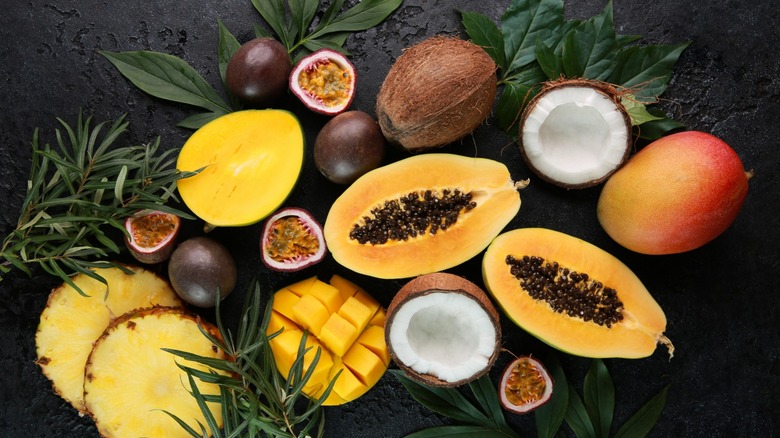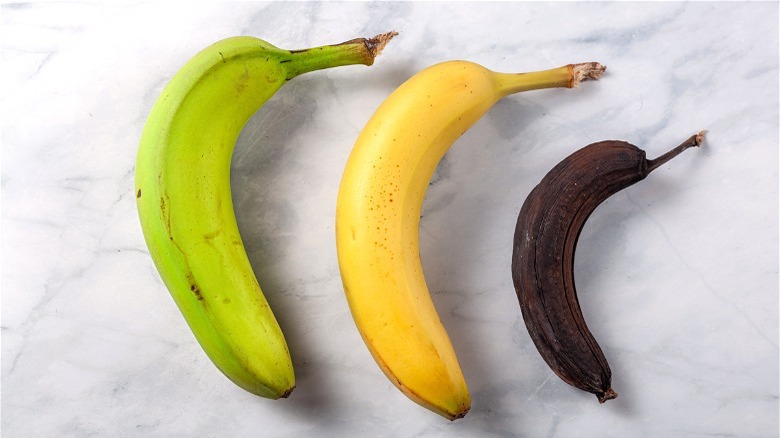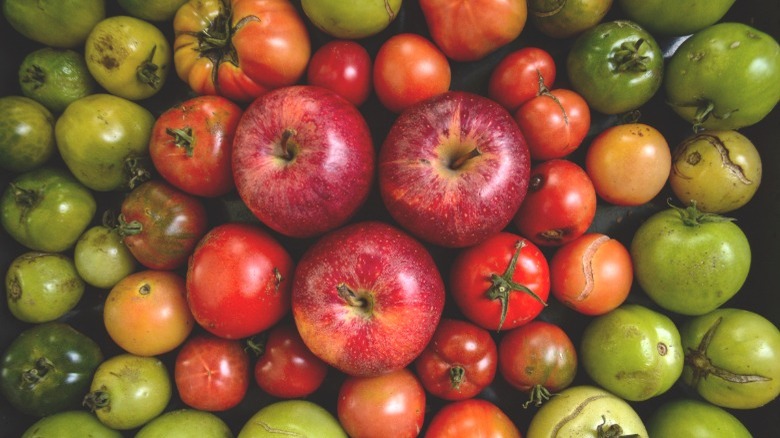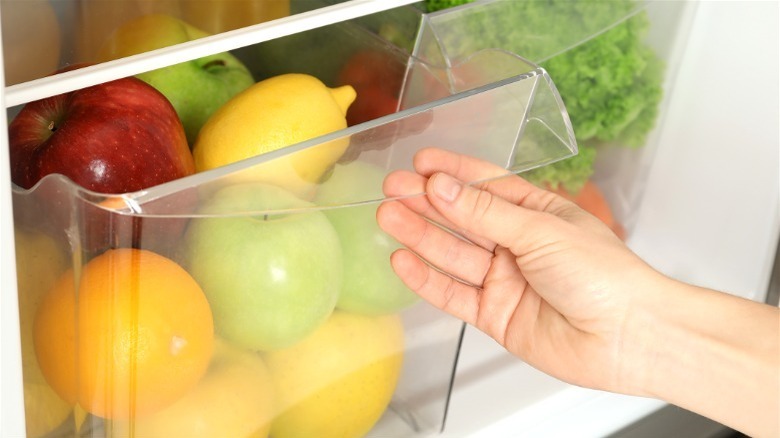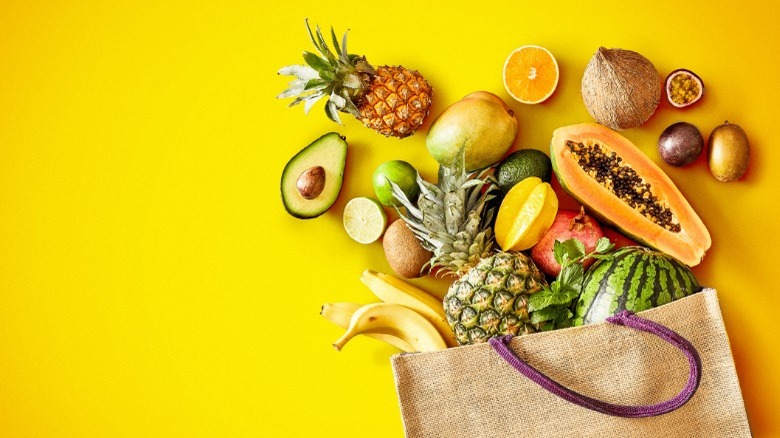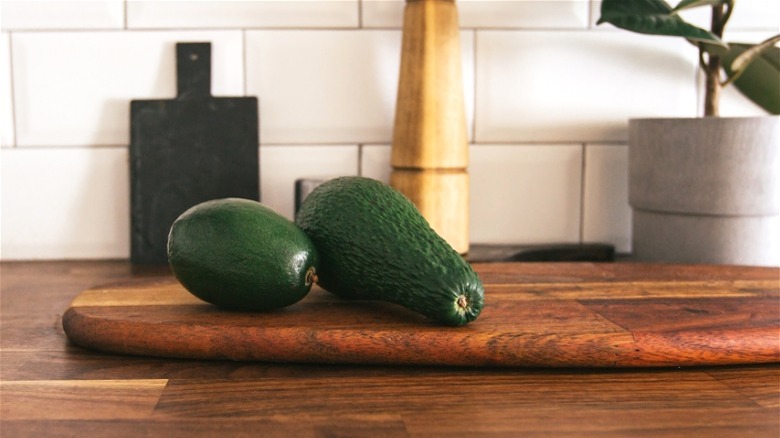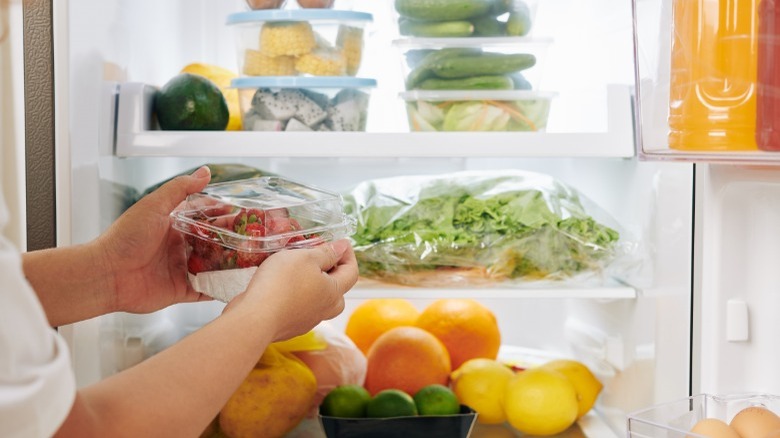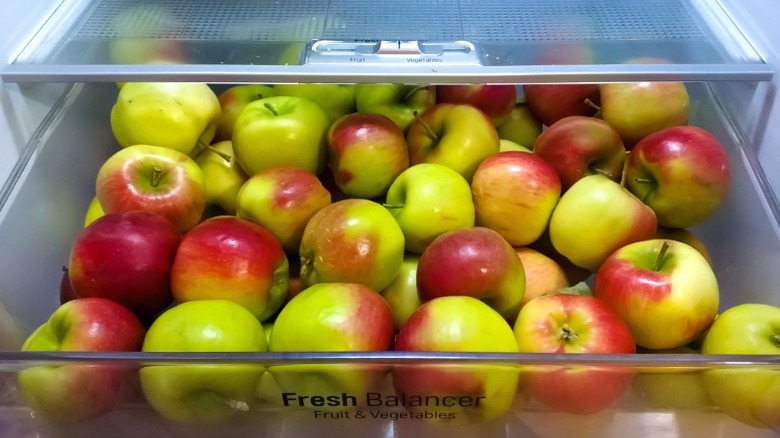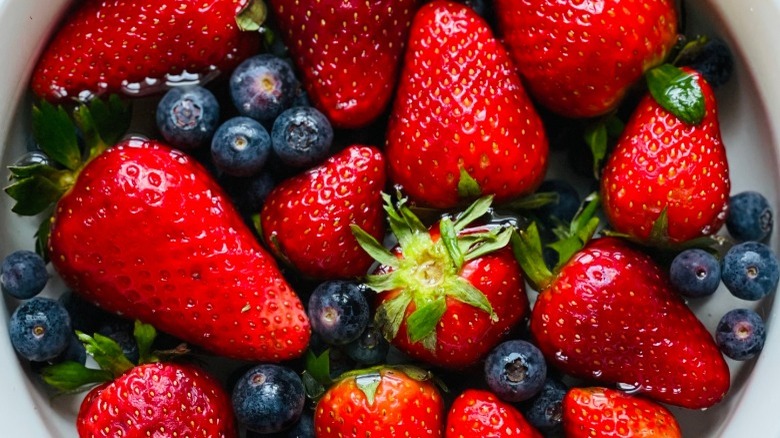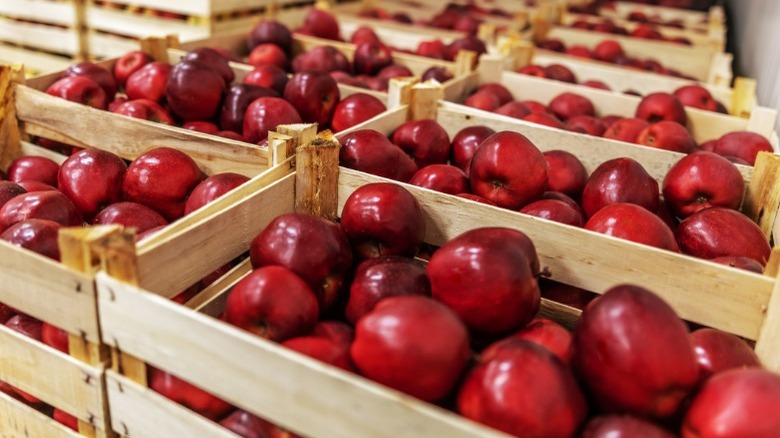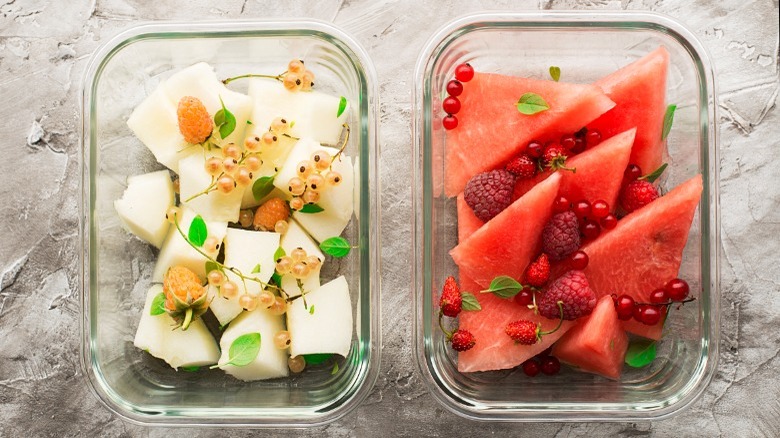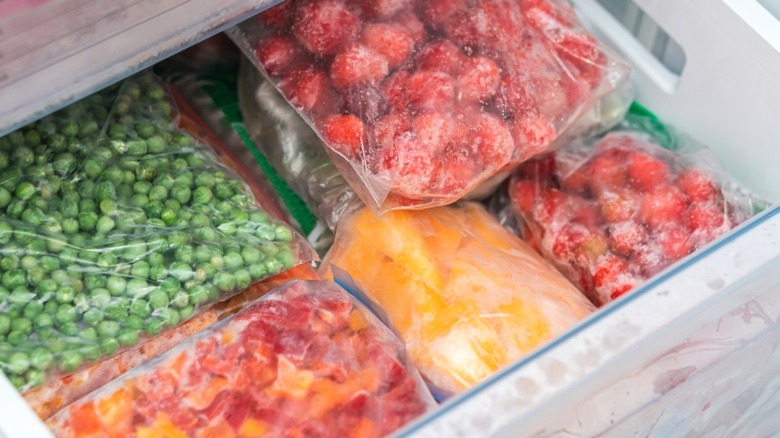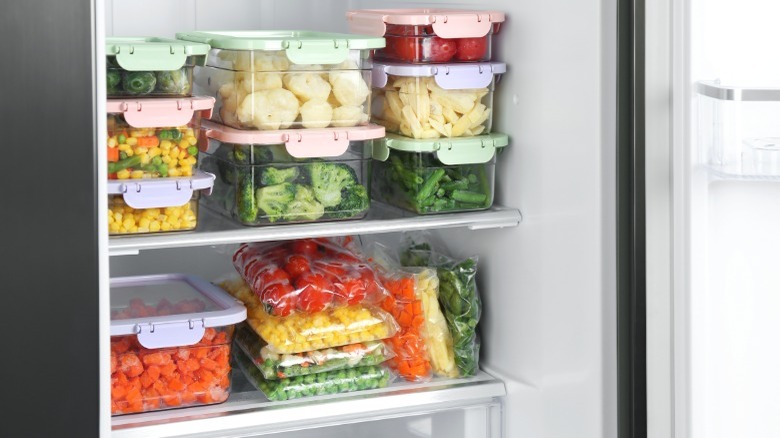13 Hacks To Keep Fruit Fresher For Longer
Are you tired of buying fruits only to find them wilted or moldy within a few days? Unfortunately, you're not alone: Far too often, we find ourselves lacking the necessary skills when it comes to shopping, prepping, and storing fruits, leading to excessive waste and disappointment. Fortunately, learning a few basic fruit storage hacks can drastically extend their lifespan, enhance your fruit-eating experience and save you money in the long run.
By learning how to pick the best produce, finding the perfect spot in your kitchen to keep your fruits comfortable, helping them ripen (or not!), understanding which fruits can and can't be stored together, and knowing what to do with excess fruit, you'll be well on your way to reducing food waste and minimizing your supermarket visits. Additionally, by practicing proper fridge hygiene and organization, you'll not only make your fruit last longer but will create a healthier kitchen environment. So join us on a quest to adopt a mindful, educated approach to fruits and never stare a rock-hard avocado, a moldy strawberry, or an overripe banana in the eye ever again.
Buy whole, fresh fruit
Before we dive into the best storage practices for keeping your fruits fresh, it's essential to first master the art of buying fruit that will thrive in your home. When selecting fruits, remember that they don't necessarily have to be ripe, but they should definitely be fresh and whole.
Unless you plan to indulge in your sweet purchase right away, it's best to opt for fruit that's not too ripe, allowing it to reach perfection on your kitchen counter at home. A great tip is to look for seasonal and, ideally, local fruit, as it will be the freshest and most flavorful. In contrast, you should never buy pre-cut fruit because of the higher price and diminished nutritional content. Additionally, pre-cut fruit tends to spoil more quickly and may carry a higher risk of causing illness due to potential contamination.
While each type of fruit has unique rules for selecting the best specimen — for example, you want extra firm apples but slightly softening avocados — there are some commonalities. Keep an eye out for bright colors, plumpness, a pleasant heaviness in your hand, an inviting aroma, unblemished skin, and a lack of bruises, mold, or leakage.
Study their lifespans
Fruit lifespans can be quite varied, and most will only keep for a few days, so if you're looking to enjoy fruits that last longer, consider the sturdier types that thrive in cold storage.
Apples should be your go-to choice, as they can last for weeks or even months. Maintaining a consistent temperature is key to keeping them crisp and preventing them from becoming mealy. Longer-lasting apple varieties include thick-skinned Fuji, Granny Smith, and Honeycrisp, which you can enjoy for six to eight weeks. Regardless of the apple variety you prefer, keeping them in the back of your crisper drawer will extend their lifespan.
Citrus fruit will also be perfectly happy in the fridge, especially if it's stored whole. However, while lemons and limes can be kept in airtight containers, oranges need breathing room. When stored loose in the crisper drawer, they'll stay fresh for two to four weeks. Whole pomegranates are also comfortable in cold storage and last up to three weeks.
Though most berries have a shorter shelf life, blueberries are an exception, surviving up to two weeks in the fridge. Additionally, cranberries can last an impressive month when stored in the original packaging in the crisper drawer.
Make note of ethylene compatibility
Ethylene might not be a term you're familiar with, but its effects on fruit are something you've likely experienced firsthand. For example, if you've ever wondered why a single bad apple can ruin the entire bunch, this naturally occurring gas responsible for the ripening (and eventual decay) of fruit is the answer.
Some fruits produce a lot of ethylene, while others are sensitive to it, and some aren't affected much at all, and if you don't play your cards right, some will rot quicker if they're stored near each other in your fridge. Apples, for example, are notoriously high ethylene producers. This means that unless you need to ripen fruit quickly, it's best not to store anything next to them. Likewise, stone fruit and melons are best kept separately due to their ethylene levels. Unripe bananas are sensitive to ethylene, but ripe ones make much themselves. On the other hand, grapes, pineapples, watermelons, cherries, and citrus fruits aren't particularly sensitive to ethylene and will store well next to anything. To slow down ethylene production, keep the "gassy" fruits refrigerated, with their stems wrapped in plastic and secured with a rubber band or isolated in a plastic bag.
Know which fruit needs to be kept in the fridge
For a produce storage novice, it's important to learn which fruits are too cool (or, rather, prefer to be cool) for the counter. First up, we have the ever-delicate berries. Strawberries, cranberries, raspberries, currants, blackberries, and grapes all love to chill out in the fridge. However, if kept at room temperature, they will ripen and go mushy very quickly (possibly attracting fruit flies). They'll fare best on one of the fridge shelves in their original packaging or in a breathable container you want to avoid moisture buildup, which can lead to mold. Likewise, grapes are best stored unwashed in the perforated plastic bag or container they came in, keeping them fresh and plump.
Once ripe, stone fruits like cherries, apricots, and plums will enjoy your fridge's cool embrace if given breathing room in an open container. Likewise, the absolute best way to store oranges is loose or in a mesh bag — airtight storage will cause them to lose their springy firmness. Other citrus fruits, as well as apples, will last weeks in the fridge without losing their best qualities. Finally, a word on cut fruits: These need to be refrigerated immediately (wrapped in clingfilm or packed into an airtight container) and consumed as soon as possible.
And which fruit absolutely shouldn't be refrigerated
As much as some fruits need cool fridge air to keep them fresh and plump, others become faint versions of themselves under the same conditions. The latter usually applies to fruits known as climacteric, sold underripe, designed to reach peak flavor and texture after they make it to your home. For example, storing pears in the refrigerator will leave you with hard and mealy fruit — they deserve a chance to soften fully on the counter at a comfortable temperature. Likewise, bananas are one of the foods you should never refrigerate, as they prefer to ripen in warm, damp environments (which is something your fridge won't provide). Instead, let them do their thing next to other climacteric fruits, which are sensitive to ethylene.
Some non-climacteric fruits (or those that stop ripening after being picked) also thrive at room temperature. For example, you can store a pineapple on the counter for several days without losing its sweet tropical flavor. It could even soften up a bit and develop a juicier mouthfeel. The same can be said about whole watermelons, which will retain more of their flavor and health benefits when kept out of the fridge.
And which are in-between
Ever wondered if it's okay to store avocados in the refrigerator? The answer is yes and no. How is that possible? That's because, between the crisper and the counter, there is a secret third category of fruit that loves a little bit of both. That's right — climacteric fruits such as avocados, pears, mangoes, kiwi, and stone fruits (like peaches, plums, and apricots) continue to ripen off the vine and need a little extra time at room temperature to reach their peak before being transferred to the chilly confines of your fridge. All in all, it's a bad idea to refrigerate these fruits straight away unless you're purposefully trying to hinder their natural ripening process.
Instead, giving them time to soften and sweeten outside the fridge before moving them to cold storage to prolong their freshness is the way to go. Whether you keep them in a bowl or in a paper bag is up to you; add a ripe banana or apple to the mix to speed things along. Just don't leave them unattended for too long — you deserve a perfectly ripe piece of fruit at the end of this waiting game, not a mushy mess.
Consider the storage vessel
Countertop fruit needs ample breathing space, while refrigerated fruit prefers certain moisture levels. So, based on where you plan on storing it, you'll need to remove or keep the original packaging. Opt for bags and containers that can be labeled and either kept open or airtight, depending on the type of fruit you're storing in them. This way, you'll be able to track the fruit lifespan more efficiently. Glass containers and sturdy silicone pouches are ideal, but feel free to use what's available at home.
Grapes and cherries thrive in their perforated plastic containers, while other berries benefit from being placed in a container lined with paper towels and topped with a loosely fitted lid. For frequent berry buyers, investing in advanced containers that promote airflow without creating excess moisture is a smart move. Larger citrus fruits can be stored package-free, but lemons and limes are best kept in airtight containers or pouches. Alternatively, storing them in a container filled with water can prevent them from drying out. Apples should be loosely packed in a plastic bag to minimize ethylene effects on other fruit or, if your fridge permits, stored in a dedicated crisper. To avoid fruit container clutter in your fridge, opt for silicone food savers to cover leftover halved fruit, maintaining order and saving space while preserving freshness.
Find the right spot in the fridge
Do you know that the way your fridge is organized isn't random? Contrary to popular belief, a refrigerator is not just a universally cold box. In fact, the humidity, temperature, and airflow can vary significantly in different parts of the fridge. Knowing how to choose the right spot for your fruits will help keep them fresher for longer.
The coldest zone in the fridge is located at the back; however, it's a no-go for fruit storage. The air is dry, and the temperature is low, which can lead to chilling injury in climacteric fruits unless they're already ripe, cut, and stored in airtight containers. Fruits like oranges, cherries, grapes, and berries that need breathing room without excessive humidity thrive in the areas toward the front of the fridge. That also means you should take advantage of all the space you can and start storing fruits and vegetables in the refrigerator door. Lastly, the crisper drawer provides a milder temperature and a humid environment, which is perfect for preventing apples and citrus fruits from losing their natural moisture and shriveling up, but it can cause others to rot or get moldy faster, so pay attention to what you put in there.
Give berries a bath — but store dry
With so much conflicting advice surrounding proper fruit storage, one universal rule applies to all kinds of produce: You're not supposed to wash it until you're ready to eat it. And while moisture is usually a death sentence to something as delicate as berries or ripe fruit, two techniques involving water have proven to prolong their lifespan.
First, there's the hot water bath technique developed by food science writer Harold McGee. It involves removing the berries from their original container and letting them air-dry first, then briefly immersing them in 125 degrees Fahrenheit water for 30 seconds before cooling and drying them. The heat effectively kills any bacteria or mold spores, enabling the berries to stay fresh for an extended period. Similarly, a vinegar bath is another scientifically-backed trick for keeping berries fresh. A 3:1 water-vinegar solution can further assist in eliminating harmful organisms post-boiling or serve as an alternative.
But however effective these hacks might be, their effects will be negated by not air-drying the berries properly before placing them in storage containers, as they will spoil just as quickly from the retained moisture.
Try to match the storage conditions to their climatic background
Not all fruits are equal when it comes to ideal storage conditions, but you can experiment with optimal storage guidelines to make them feel more at home, whether in or out of the fridge. By replicating the fruit's climatic background, you create an environment closely resembling its natural habitat and preserve its freshness and flavor.
To store fruit the right way, you can either imitate their growing or storage conditions. Tropical fruits thrive in warmer temperatures, so your pineapples, bananas, and mangosteens should be stored at room temperature, away from direct sunlight. Conversely, temperate fruits like ripe apples, pears, and cherries prefer cooler conditions and can be refrigerated to extend their lifespan. Stone fruits, like peaches and plums, should ripen at room temperature before being chilled, as refrigeration can cause a mealy texture.
In some cases, you'll need to consider whether the fruit has been refrigerated prior to your purchase and build your storage strategy based on that. Case in point: The best way to store watermelon will depend on whether it's local and farm-fresh or has been subjected to colder temperatures before it got to you. Once refrigerated, it will need to stay refrigerated; otherwise, there's no need to take up precious fridge space with it.
With cut fruit, act fast
Joys of meal prepping aside, there's no denying that cut fruits tend to spoil quicker. Fortunately, with a few tricks, storing them won't be an issue.
One challenge is oxidation, which doesn't necessarily spoil the fruit but makes it look less appealing. Our tests of five different methods identified the best way to store cut avocado: Placing it cut-side down in a container with olive oil, creating a natural seal that helps preserve its flavor and texture for up to five days. Although it wasn't as effective for avocados, a squeeze of lemon juice is a common remedy for sliced apples and bananas.
Another issue is loss of moisture, which is why storing watermelon cuts requires wrapping them in cling film or slicing them into cubes that will last a couple of days in an airtight container. Apples and citrus fruits can be stored in water, but for fruits that need excess moisture removal to inhibit bacterial growth, such as cut strawberries, use a paper towel lining and a tight-fitting lid on a glass container.
Regardless of the tricks you use, remember to refrigerate prepped fruit immediately and consume it within a couple of days, if not sooner. This way, you won't miss out on their nutrients, flavor, and optimal texture.
Preserve ripe fruit if you can't eat it
Preserving ripe fruits that you didn't manage to eat is a fantastic way to extend their lifespan, allowing you to enjoy their flavors and nutrients long after the season has passed. Freezing is both easy and efficient, provided you avoid common mistakes. To properly freeze fresh fruits, use perfectly ripe specimens, but skip watermelon and other moisture-heavy fruit, as they won't maintain the same texture when thawed. Wash and dry them thoroughly, then cut and remove any seeds, cores, or inedible parts. Spread the prepped bits in a single layer on a tray and leave them in the freezer for a few hours before moving them to airtight containers or freezer bags. This pre-freezing technique helps prevent the fruits from sticking together, making it convenient to grab a handful whenever needed.
Alternatively, if you don't have much freezer space, explore the different types of fruit preserves. They typically involve cooking the fruit with sugar and sometimes pectin, then storing the mixture in sterilized jars to create a delicious, shelf-stable treat. Whichever method you choose, preserving leftover seasonal fruits and berries allows you to enjoy a taste of summer all year round and reduces food waste, making it an excellent habit to adopt in your kitchen.
Keep a clean, well-organized fridge
You don't have to strive for a picture-perfect, Instagram-worthy, pedantic fridge (unless you're naturally drawn to that), but it's safe to say that keeping it clean and organized plays a crucial role in prolonging the shelf life of your fruits and other perishables. A well-maintained refrigerator helps reduce cross-contamination and prevents unpleasant odors from affecting the taste and quality of your food. Start by scheduling weekly fridge wipedowns and monthly deep cleaning sessions. During the latter, remove all items, wipe down shelves and drawers, and discard any expired or spoiled food.
When organizing your fridge, opt for transparent, stackable containers to save space. If BPA is something that concerns you, slowly introduce glass containers into your repertoire — sterilized jars from other products will do just fine! If you're using your own containers instead of store-bought, you can label them with the purchase and expected lifespan dates. And don't forget to practice the first-in, first-out (FIFO) method: Place older items in front or on top so you're more likely to consume them before they spoil. By adopting these simple habits, you'll not only preserve your fruits for longer but also contribute to a healthier and more efficient kitchen environment.
Static Media owns and operates Tasting Table and Mashed.
